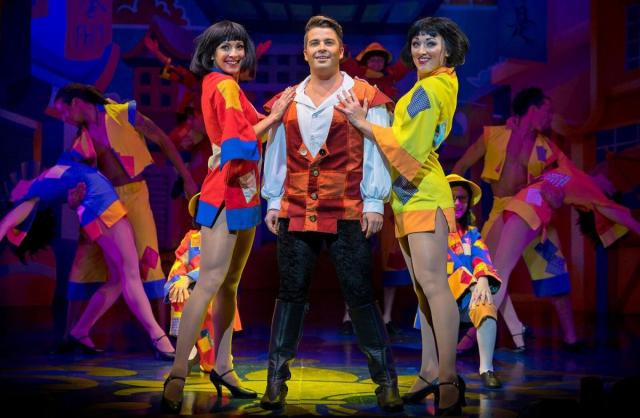Pantomime is a type of musical comedy stage production designed for family entertainment. It was developed in England and is performed throughout the United Kingdom, Ireland and (to a lesser extent) in other English-speaking countries, especially during the Christmas and New Year season. Modern pantomime includes songs, gags, slapstick comedy and dancing. It employs gender-crossing actors and combines topical humour with a story more or less based on a well-known fairy tale, fable or folk tale. Pantomime is a participatory form of theatre, in which the audience is expected to sing along with certain parts of the music and shout out phrases to the performers.
Pantomime has a long theatrical history in Western culture dating back to classical theatre. It developed partly from the 16th century commedia dell'arte tradition of Italy and other European and British stage traditions, such as 17th-century masques and music hall. An important part of the pantomime, until the late 19th century, was the harlequinade.
The Roman pantomime drew upon the Greek tragedy and other Greek genres from its inception, although the art was instituted in Rome and little is known of it in pre-Roman Greece. The English word came to be applied to the performance itself. According to a lost oration by Aelius Aristides, the pantomime was known for its erotic content and the effeminacy of its dancing. Roman pantomime was a production, usually based upon myth or legend, for a solo male dancer—clad in a long silk tunic and a short mantle (pallium) that was often used as a "prop"—accompanied by a sung libretto (called the fabula saltica or "dance-story") rendered by a singer or chorus (though Lucian states that originally the pantomime himself was the singer). Music was supplied by flute and the pulse of an iron-shod shoe called a scabellum. Performances might be in a private household, with minimal personnel, or else lavish theatrical productions involving a large orchestra and chorus and sometimes an ancillary actor. The dancer danced all the roles, relying on masks, stock poses and gestures and a hand-language (cheironomy) so complex and expressive that the pantomime's hands were commonly compared to an eloquent mouth. Pantomime differed from mime by its more artistic nature and relative lack of farce and coarse humour, though these were not absent from some productions.

